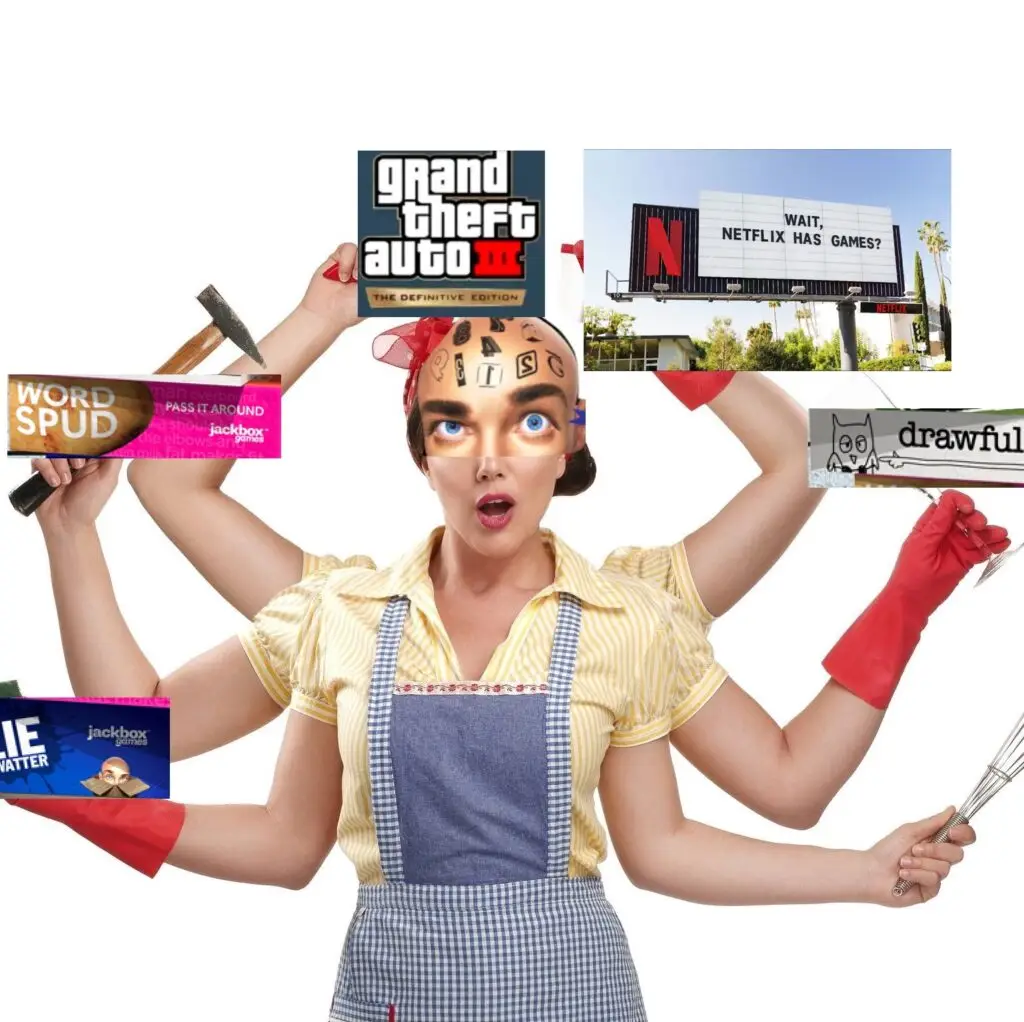Netflix Games Needs to Acquire the Jack(box)-of-All-Trades

Netflix Games finally has a coherent strategy—hallelujah! Yet, despite this newfound clarity, it’s missing perhaps the most obvious acquisition opportunity since Sony scooped up Insomniac Games: Jackbox Games.
Netflix pushes games to subscribers via a dedicated row within its mobile app, directing users to separate App Store pages for downloads. The strategy was flawed from the start, as 70%+ of Netflix consumption happens on the TV. The Games group was desperate for awareness, so they turned to physical billboards that read: “Wait, Netflix has Games?” This is a modest improvement, but it still fails to meet subscribers where they consume content—the TV.
While Netflix did have an AAA FPS studio, it was dubious that it could ever solve for distribution or, more importantly, input. Netflix’s sprawling ecosystem of devices and lack of a dedicated controller made it suspect from day 1—unless, perhaps, another ill-fated game streaming service was being planned (RIP OnLive, Stadia, GameFly, and soon-to-be xCloud).
Enter Jackbox Games: a family-friendly (depending on who you play with), party game experience with minimal hardware requirements, scaling across multiple platforms on a single code base, and using the phone as the primary input. It’s difficult to overstate how perfectly Jackbox aligns with Netflix Games’ renewed strategy and its platform challenges. It could seamlessly scale across Netflix’s existing platforms, leveraging technology from Netflix’s shuttered interactive TV division. It’s easy to imagine individual Jackbox games sitting in its own content row on Netflix’s TV app. Beyond technical feasibility, integrating Jackbox would help Netflix revive a broader social vision.
While game makers tout social as driving long-run retention, Netflix has moved away from social. Friend’s list, queues, and group watch have been dead for nearly a decade; I suspect the killers are tech PMs who A/B tested features into oblivion. However, the underlying issue is a lack of visionary ambition, not social as a concept. Netflix Games could—and should—lead the charge in crafting a richer, more socially interactive entertainment platform, especially with Disney+ nipping at Netflix’s heels.
Netflix Games is brimming with exceptional talent; however, from what I understand, corporate politics has hampered the division’s ability to form its own identity. Netflix leadership seems determined to follow in the footsteps of Google, Facebook, and Apple in failing to respect the medium of games. While Amazon Games isn’t a smash success, its relative success over the last five years is a function of Amazon significantly loosening the cultural reins and creating an internal corporate annex: games are to be run by game people.
Instead of fostering innovation, Netflix Games opted for the safe, uninspiring route of accumulating vast content libraries. This strategy fundamentally misunderstands how players engage with games. It’s a strategy consistent with the passive content consumption model Netflix was built on—not the interactive, social-driven medium games inherently are. For Netflix Games to thrive, leadership needs to embrace gaming’s unique dynamics rather than treating it as merely another category in its streaming catalog.